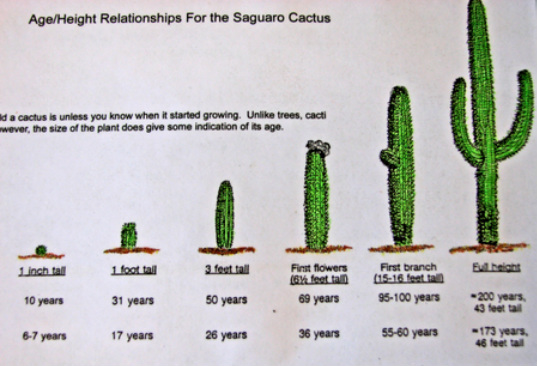Cacti are unique plants that have adapted to survive in arid desert environments. They employ specialized features like shallow roots, spines, and water-storing tissue to thrive where other plants cannot. Despite their distinctive form, cacti follow the same general life cycle as other flowering plants. Let’s explore the key stages of growth and reproduction that a typical cactus experiences.
Germination
The cactus life cycle begins with a seed. Cactus fruits are typically berry-like, with sweet pulp and numerous seeds. Birds and mammals eat the fruit and later excrete the seeds. With sufficient warmth and moisture, the seeds can then germinate and grow.
A germinated cactus seed first puts out a primary root from its radicle. Next, the hypocotyl emerges above ground as a tiny seedling. Two seed leaves (cotyledons) follow to begin photosynthesis. Though only 1-4 mm tall at this point, the young cactus is well on its way.
Seedling Growth
In the months after germination, the cactus seedling focuses on root development and vegetative growth. Its appearance begins taking on the typical cylindrical or spherical cactus shape.
Growth happens slowly, as the seedling needs time to produce its first areoles – the specialized bud areas from which spines and branches emerge. The stem also expands, storing moisture in its succulent tissue.
Maturation
Eventually, given adequate sunlight, nutrients, and water, the juvenile cactus reaches maturity. This happens when it accumulates sufficient resources to support flowering and reproduction.
For many cacti, this benchmark occurs between 5-15 years old. Larger columnar cacti like saguaro may take up to 30-50 years to mature. But once sexually mature, the cactus can bloom yearly.
Flowering
Mature cacti produce showy flowers in spring or summer when conditions are warm and dry. The blooms open during the day for pollinators like bees butterflies birds, and bats seeking nectar.
Flowers come in various colors like yellow, pink, red, orange, purple, or white. Their shapes also vary among cactus species from cups to bells to clusters But all cacti flowers serve the same role – attracting pollinators for reproduction
Pollination
Pollination occurs when pollen from a cactus flower reaches the stigma of another compatible cactus The pollen grain then fertilizes the ovule to enable seed production
Cacti cannot self-pollinate, so they rely on wind, animals, and insects to transfer pollen between genetically distinct plants. This cross-pollination ensures genetic diversity.
Fruiting
After successful pollination, the base of the flower begins swelling into a fleshy fruit containing numerous seeds. Cactus fruits come in diverse shapes, sizes, and colors like red, purple, pink, orange, yellow, or green.
The sweet, nutritious fruits entice animals to eat them and disperse the seeds. Common cactus fruit consumers include birds, bats, coyotes, rabbits, turtles, and seed harvester ants. The animals excrete the seeds elsewhere to propagate new cacti.
Asexual Reproduction
In addition to sexual reproduction via seeds, cacti can also propagate asexually through vegetative offsets. Mature plants form attached stems called offsets or “pups” that can root and detach to grow new plants identical to the parent.
Offsets allow cacti to clone themselves and multiply without the need for seeds or pollination. Cacti like Christmas and Easter cacti frequently grow offsets for easy propagation.
Forced Flowering
Cacti usually bloom on their natural seasonal schedule. But flowering can sometimes be artificially induced by manipulating light and temperature conditions.
Exposing a dormant cactus to cool temperatures and darkness for several weeks can trick it into thinking winter passed. When warmth and light return, it is stimulated to bloom. This technique works for some cactus species to prompt earlier or off-season flowering.
The Cycle Continues
The cactus life cycle is complete when its seeds germinate and grow into mature, flowering plants. This initiates the next generation to begin the sequence again.
Given the slow pace of cactus growth, it may take decades or even centuries for numerous life cycles to unfold. But each cycle propagates new cacti adapted to thrive in hot, dry deserts.
Understanding the cactus life cycle enables us to better appreciate how these iconic plants persist in harsh environments. Though their development is gradual, cacti exemplify incredible resilience and self-sufficiency. Through specialized adaptations and reproductive strategies, they endure challenging desert conditions that few other plants can.
David Attenborough: The Fascinating Life Cycle of Desert Plants | Nature Bites
FAQ
What is the life cycle of the cactus?
What is the life of cactus plant?
What cactus dies after it blooms?
What does a cactus look like when first growing?
- A Complete Guide to Caring for Yuki Cherry Blossom Shrub - January 23, 2025
- Identifying Red Hot Poker Seeds: What to Look For When Harvesting Torch Lily Pods - January 23, 2025
- A Complete Guide to Harvesting Evening Primrose Seeds - January 23, 2025

